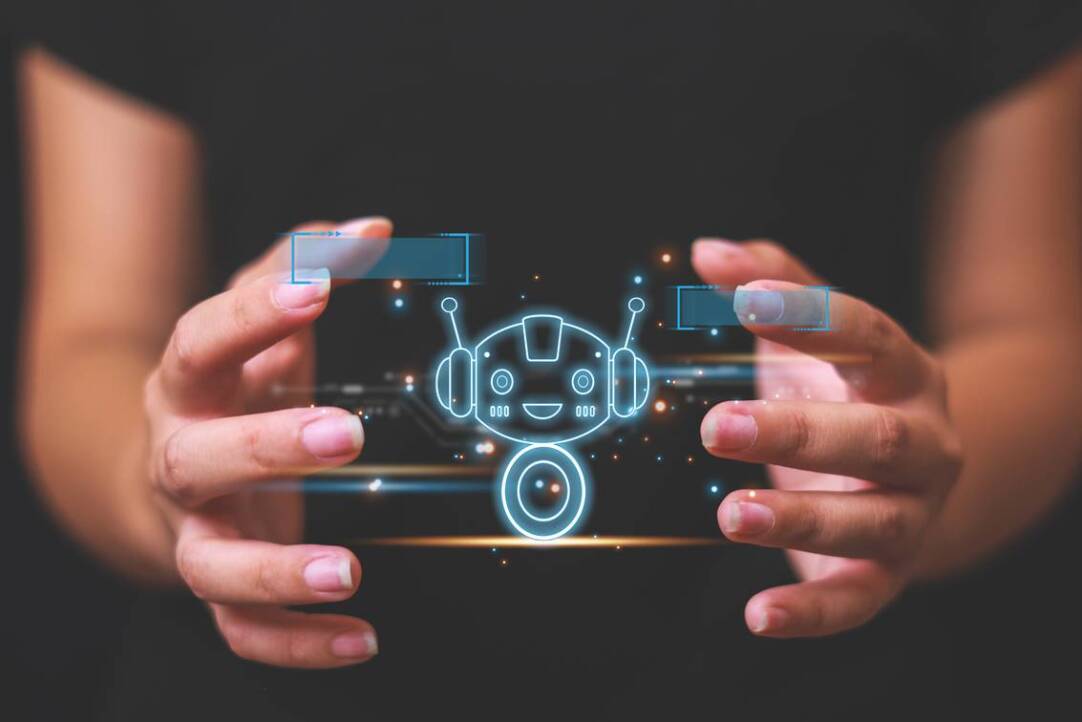‘We Need to Learn to Communicate with Artificial Intelligence Services’

An online course 'What is Generative AI?’ has been launched on the Open Education platform, which will help students learn more about how to properly communicate with neural networks so that they can perform tasks better. Daria Kasyanenko, an expert at the Continuing Education Centre and senior lecturer at the Big Data and Information Retrieval School at the Faculty of Computer Science, spoke about how generative AI works and how to create content with its help.

Daria Kasyanenko
— What is generative artificial intelligence?
— Generative models (GenAI) are a type of artificial intelligence that creates text, code, images, music, and other content in response to prompts.
Such models are trained on large amounts of data, learning by observing and comparing patterns. For example, if we show a model millions of pictures of a traffic light, it will gradually begin to understand that a traffic light is a rectangular box with red, yellow, and green lights.
Generative AI is mainly used for content creation. School students write essays and marketers draw up promotion plans—there are many options. But, at the same time, our ideas about artificial intelligence are greatly distorted by popular culture. It seems to us that, at best, it will solve all our problems, and, at worst, it will enslave us. Neither of these will happen in the near future.
Learn more about working with neural networks and using artificial intelligence on the portal (in Russian).
Existing models will not replace you at work (unfortunately or fortunately), but they can become a personal assistant in routine matters: for example, writing emails, proofreading a text, analysing tabular data, and summarising large texts or videos.
— How are texts generated? Why does AI, for example, produce false facts?
— Texts are created using language models. They learn from large volumes of text and can grasp the nuances of a language. The system receives a task (prompt), processes it and returns with a response. This model can be visualised as a kind of sage who has read all the books in the world and can reproduce the answer to any question from memory.
However, models have so-called hallucinations, and it is because of them that errors occur. For example, you ask a model to write an essay about the great writer Neuron Neuronovich Neuronov. The model will be happy to tell you what a brilliant writer he is, and even make a list of his books. This happens when AI lacks knowledge on a topic and, like a student who did not prepare for an exam, begins to lie. This can also happen due to random system failures.
— How are images generated? Why do images sometimes have artefacts?
— Images are generated from noise (empty image). Gradually, the model improves it using the prompt until it produces an image similar to what the user has requested.
Generated images usually have troubles while drawing people: extra arms and legs, complete facial symmetry (the uncanny valley effect), different eyes, strange smiles, and so on. The more detail the image has, the worse the model will cope with the task.
The simplest solution is to ask the model to draw a person in poses where arms and legs are not visible, or to draw a portrait.
— What is a human’s role in managing AI if we talk about an ordinary user?
— Now we need to learn to communicate with generative AI services. It may seem that asking questions in a chat and getting answers is quite simple. But to get a truly high-quality answer, you need to learn prompt engineering, that is, the art of correctly composing questions for a machine. An entire profession even exists called prompt engineer.
Currently, a great number of textbooks on prompts are available, where one can learn how to correctly compose queries in summary formats, positional formats, with context description and instructions description. This is a whole science.
During the course, we talk about how to use prompts and learn to better understand how they work.
See also:
AI Predicts Behaviour of Quantum Systems
Scientists from HSE University, in collaboration with researchers from the University of Southern California, have developed an algorithm that rapidly and accurately predicts the behaviour of quantum systems, from quantum computers to solar panels. This methodology enabled the simulation of processes in the MoS₂ semiconductor and revealed that the movement of charged particles is influenced not only by the number of defects but also by their location. These defects can either slow down or accelerate charge transport, leading to effects that were previously difficult to account for with standard methods. The study has been published in Proceedings of the National Academy of Sciences (PNAS).
‘Services Must Be Flexible’: How Governments Can Use Artificial Intelligence
The HSE International Laboratory for Digital Transformation in Public Administration held a roundtable titled ‘Artificial Intelligence in Public Administration: Current Trends.’ Scholars from Israel, China, and Russia discussed which public services AI can enhance and what key factors must be considered when adopting new technologies.
Artificial Intelligence Improves Risk Prediction of Complex Diseases
Neural network models developed at the HSE AI Research Centre have significantly improved the prediction of risks for obesity, type 1 diabetes, psoriasis, and other complex diseases. A joint study with Genotek Ltd showed that deep learning algorithms outperform traditional methods, particularly in cases involving complex gene interactions (epistasis). The findings have been published in Frontiers in Medicine.
Artificial Intelligence as a Catalyst for Sustainable Development
Artificial intelligence is transforming every aspect of life, expanding both our capabilities and our boundaries. At the same time, it presents new challenges for humanity, including concerns about safety, ethics, and environmental sustainability. Today, each neural network leaves a significant carbon footprint. However, with responsible management, AI has the potential to benefit the planet and become a cornerstone of a sustainable future economy. Panos Pardalos, Academic Supervisor of the Laboratory of Algorithms and Technologies for Network Analysis at the HSE Campus in Nizhny Novgorod, emphasised this point as he addressed the XXV Yasin (April) International Academic Conference on Economic and Social Development.
HSE Develops Its Own MLOps Platform
HSE researchers have developed an MLOps platform called SmartMLOps. It has been created for artificial intelligence researchers who wish to transform their invention into a fully-fledged service. In the future, the platform may host AI assistants to simplify educational processes, provide medical support, offer consultations, and solve a wide range of other tasks. Creators of AI technologies will be able to obtain a ready-to-use service within just a few hours. Utilising HSE’s supercomputer, the service can be launched in just a few clicks.
‘HSE’s Industry Ties Are Invaluable’
Pan Zhengwu has spent the last seven years at HSE University—first as a student of the Bachelor’s in Software Engineering and now in the Master’s in System and Software Engineering at the Faculty of Computer Science. In addition to his busy academic schedule, he works as a mobile software engineer at Yandex and is an avid urban photographer. In his interview with the HSE News Service, Zhengwu talks about the challenges he faced when he first moved to Russia, shares his thoughts on ‘collaborating’ with AI, and reveals one of his top spots for taking photos in Moscow.
Scientists Present New Solution to Imbalanced Learning Problem
Specialists at the HSE Faculty of Computer Science and Sber AI Lab have developed a geometric oversampling technique known as Simplicial SMOTE. Tests on various datasets have shown that it significantly improves classification performance. This technique is particularly valuable in scenarios where rare cases are crucial, such as fraud detection or the diagnosis of rare diseases. The study's results are available on ArXiv.org, an open-access archive, and will be presented at the International Conference on Knowledge Discovery and Data Mining (KDD) in summer 2025 in Toronto, Canada.
Megascience, AI, and Supercomputers: HSE Expands Cooperation with JINR
Experts in computer technology from HSE University and the Joint Institute for Nuclear Research (JINR) discussed collaboration and joint projects at a meeting held at the Meshcheryakov Laboratory of Information Technologies (MLIT). HSE University was represented by Lev Shchur, Head of the Laboratory for Computational Physics at the HSE Tikhonov Moscow Institute of Electronics and Mathematics (HSE MIEM), as well as Denis Derkach and Fedor Ratnikov from the Laboratory of Methods for Big Data Analysis at the HSE Faculty of Computer Science.
AI vs AI: Scientists Develop Neural Networks to Detect Generated Text Insertions
A research team, including Alexander Shirnin from HSE University, has developed two models designed to detect AI-generated insertions in scientific texts. The AIpom system integrates two types of models: a decoder and an encoder. The Papilusion system is designed to detect modifications through synonyms and summarisation by neural networks, using one type of models: encoders. In the future, these models will assist in verifying the originality and credibility of scientific publications. Articles describing the Papilusion and AIpom systems have been published in the ACL Anthology Digital Archive.
HSE Researchers Develop Python Library for Analysing Eye Movements
A research team at HSE University has developed EyeFeatures, a Python library for analysing and modelling eye movement data. This tool is designed to simplify the work of scientists and developers by enabling them to efficiently process complex data and create predictive models.


